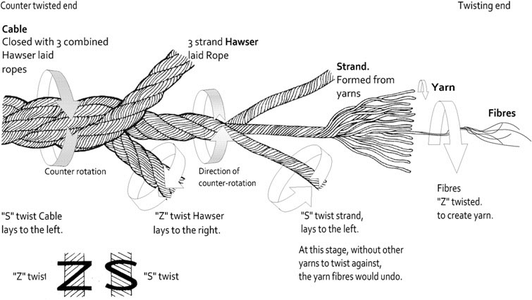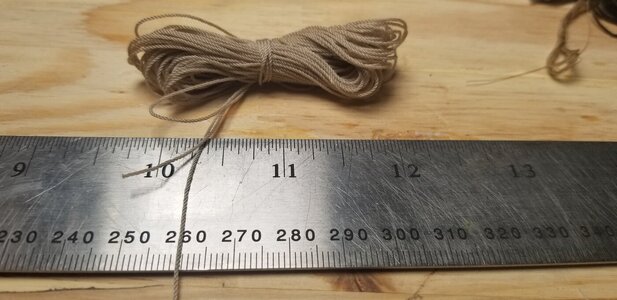- Joined
- Jul 24, 2022
- Messages
- 79
- Points
- 78

Hello all,
As most of you know this hobby can lead you down many rabbit holes. Aftermarket this, homemade that, and everything in between. My latest rabbit hole is rope. And while there are many quality scale rope makers out there, I wanted to try and build my own continuous rope walk. I actually have already purchased some rope from Syren Models. Very nice rope and a pretty reasonable price. But I'm a tinkerer. I love my 3d printer and I love modeling parts and working through interesting projects. I have went through many iterations, mostly due to clearance and making the parts move smoother within itself. A lot of the design decisions were made based on parts and hardware I had left over from other projects. M6 bolts and bearings, M4 machine screws and 8mm round bar and powered by an old laptop power supply. It's been an interesting learning experience and I'm glad I gave it a go. I think the rope is tight enough, it sure looks like rope to me but I still would like everyone to have a look and let me know their thoughts as well.
So far I have used Gutermann thread and the kit supplied thread for my testing. The only rope I have made is 1x3. I can't seem to locate my calipers, but it appears to be 1mm for the Gutermann polyester thread and 1.5mm for the kit supplied cotton thread. I have made rope 3ft (1m) long and I have made rope over 40ft long (kit supplied thread was 42ft (13m) but the longer the rope the more difficult it seems to be to work with as it comes off the spool. As it spins out of control pretty easily. There is a lot of energy stored in that rope.
From here more studies will be required to make thinner and thicker ropes. I don't know much about it now, but I will by the time this is over
My questions will probably need to go to the rigging section beyond this, but since it was a "tool" I figured I would start here.
My latest revision and some ropes.
Have a great day and thanks for stopping by.



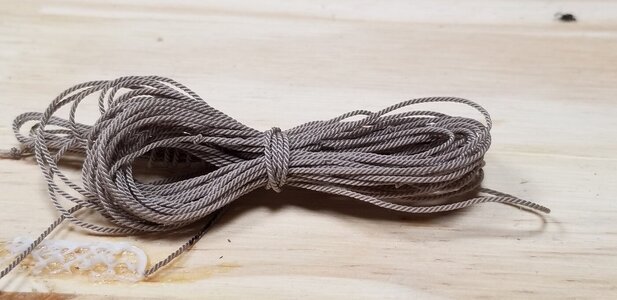

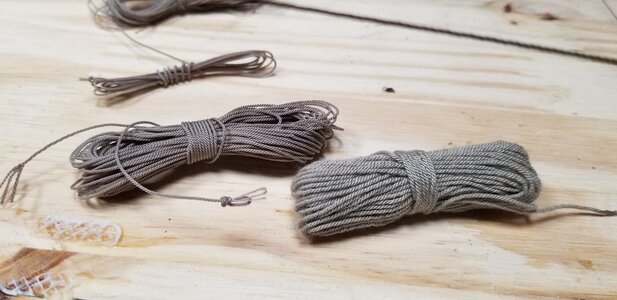
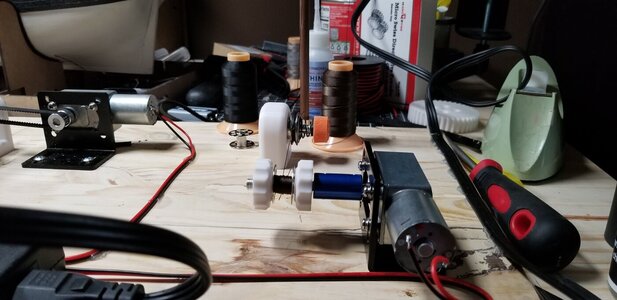
As most of you know this hobby can lead you down many rabbit holes. Aftermarket this, homemade that, and everything in between. My latest rabbit hole is rope. And while there are many quality scale rope makers out there, I wanted to try and build my own continuous rope walk. I actually have already purchased some rope from Syren Models. Very nice rope and a pretty reasonable price. But I'm a tinkerer. I love my 3d printer and I love modeling parts and working through interesting projects. I have went through many iterations, mostly due to clearance and making the parts move smoother within itself. A lot of the design decisions were made based on parts and hardware I had left over from other projects. M6 bolts and bearings, M4 machine screws and 8mm round bar and powered by an old laptop power supply. It's been an interesting learning experience and I'm glad I gave it a go. I think the rope is tight enough, it sure looks like rope to me but I still would like everyone to have a look and let me know their thoughts as well.
So far I have used Gutermann thread and the kit supplied thread for my testing. The only rope I have made is 1x3. I can't seem to locate my calipers, but it appears to be 1mm for the Gutermann polyester thread and 1.5mm for the kit supplied cotton thread. I have made rope 3ft (1m) long and I have made rope over 40ft long (kit supplied thread was 42ft (13m) but the longer the rope the more difficult it seems to be to work with as it comes off the spool. As it spins out of control pretty easily. There is a lot of energy stored in that rope.
From here more studies will be required to make thinner and thicker ropes. I don't know much about it now, but I will by the time this is over
My questions will probably need to go to the rigging section beyond this, but since it was a "tool" I figured I would start here.
My latest revision and some ropes.
Have a great day and thanks for stopping by.







Last edited:











